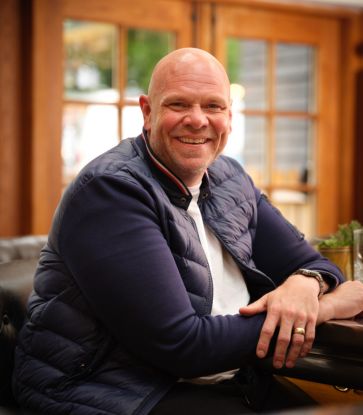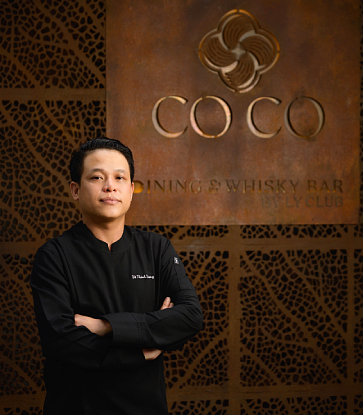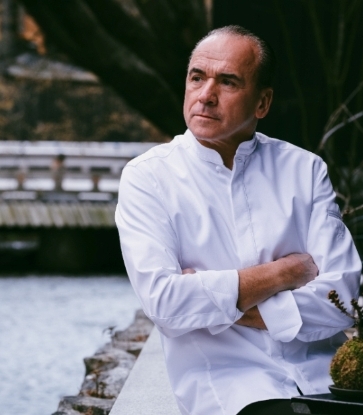Sam Tran is not your average culinary icon.
Until she moved to Australia, the 34-year-old chef had never considered a career in food, let alone fine dining. In fact, ask what she wanted to be when she was young, and you’ll get a surprising answer.
“Most girls want to be princesses. I wanted to be a witch,” she says with a laugh rather than a cackle.
Instead of entering the dark arts when she got older, she studied IT, “because I liked playing games and was good at math,” she says.
Despite her childhood fantasies and tech-fuelled aspirations, Tran found herself flying the flag for the food of northern Vietnam when she was living in Melbourne. She may not have made magic potions over a bubbling cauldron, but stirring the pho pot would bring her further than witchcraft ever could.
In 2020, she opened Gia in Hanoi with her business partner, Long Tran. In 2023, Gia received a MICHELIN Star, one of only four restaurants to get a MICHELIN Star in the guide’s first edition in Vietnam—and the only one helmed by a woman. Tran made history as the world’s first Vietnamese female to receive a MICHELIN Star. Moments later, Tran also received the MICHELIN Young Chef Award, and the room filled with joy as her team stormed into the ballroom to congratulate their head chef.
Suddenly, she has become a de facto ambassador for Vietnamese cuisine. Maybe its biggest. Although she never dreamed of such a role, no one is better suited for it.

Down under, all signs point north
Tran arrived in Melbourne in 2011 as a wide-eyed IT student aiming for a master’s degree. Like so many first-generation immigrants, she found a job not in her chosen profession but rather in a restaurant."My first job in Melbourne was working in a vegetable supermarket, then I worked as a kitchen hand, a dishwasher," she explains. "Cooking just sort of happened."
Across the city, Tran could get a few familiar foods. Pho, banh mi, goi cuon (rice paper rolls). But she rarely found dishes from her hometown, Hanoi. “So I had to cook it myself,” she says.
“I’d bring my food to work to share with friends, and they encouraged me to cook more of it.”
As her passion for Vietnam’s diverse cuisines grew, Tran set out on a new career. She got a job at Bawa Café, a popular brunch spot in Hawthorn, a Melbourne suburb. Then, she moved to the acclaimed Southeast Asian restaurant Sunda Dining. She never attended culinary school. She got enough of an education inside the kitchen—and outside it, too.
“Melbourne is very multicultural, and since the food and beverage industry is at such a high level, I learned new ways to use ingredients, different techniques,” says Tran. “It encouraged me to have an open mind when I cook. Now I can see a bigger picture.”
Melbourne’s life lessons also prepared her for unexpected disruptions.
Tran says she intended to open a restaurant in Australia. But in 2020, she got stuck in Vietnam due to the pandemic. No matter. If she couldn’t open her restaurant down under, she would do it in her hometown.

“Vietnamese people are like one big family”
Located by Hanoi’s historic Temple of Literature, Gia oozes heritage. The restaurant was built on the foundation of a house that’s more than 100 years old. When she and Long were developing it, they tried to preserve as much of the original architecture as possible. Inheritance, she explains, is a core cultural value in Vietnam.While it may seem fundamental, this principle of passing down family heirlooms and traditions has a deeper meaning.
“Gia” comes from, gia đình, meaning family. As Tran sees it, family isn’t limited to bloodlines. “Vietnamese people are one big family,” she says. “When we invite guests into Gia, we want to show them [Vietnamese] hospitality and make them feel like they’re joining a special family occasion.
Each dish Tran puts on the menu “is a story of my life in some way,” she says. It might reflect dishes families eat around the Tet holiday—inspired by cold weather food like congee and techniques like deep-frying—or feature food that makes you feel refreshed in Hanoi’s sultry summer.
The menu changes completely every three months, so Tran is always doing research and development. Much of that work revolves around ingredients, techniques, and flavours from Vietnam’s far-flung corners. Last year, for example, she took her whole team to the Mekong Delta. There they studied the people, their cultures, and the way food informs their traditions.

These lessons have influenced Gia’s approach to ingredients, too. From pig brains to trotters and roots to fruit, Tran believes in using every part of the products she uses, something ingrained in communities across Vietnam.
“Every product is the result of many peoples’ efforts,” she says. “You must respect it when it’s in your hands.”
Unsurprisingly for someone with a mathematical past, Tran also looks at ingredients with curiosity. Black garlic, Hmong chicken, areca nut, la giang (sour river leaf). “They’re like a puzzle to solve,” she adds. But solving these puzzles isn’t solely a matter of satisfaction.
Using skills she sharpened in Australia, plus techniques she picked up there, like sous-vide and molecular cooking, she turns unusual products into balanced, precise, elegant dishes.

In other words, she creates a beautiful, cohesive whole out of often unusual ingredients—finished pieces that demystify Vietnam’s culinary diversity for guests who come from all over the world.
In Australia, many Vietnamese restaurants didn’t go beyond basics like banh mi. As she steps into the limelight, Tran hopes to make dishes like sponge gourd with anchovies and abalone more approachable.
“Vietnam is a new country for [the global] dining community. We have many things to discover,” she says. “It’s important to open eyes to what we have here.”
That includes opening eyes to a new generation of chefs who, like Tran, bring unique backgrounds to the table. Even if they dreamed of being something else before they started cooking, now they are elevating Vietnam’s street food, heritage dishes, and unheralded ingredients. And their impact could be seismic.
“We have so many talented young chefs. My advice to them is to work harder and work smarter,” she says. “I believe we can catch up to the rest of the world fast.”
Illustration image: © MICHELIN Guide Vietnam




















